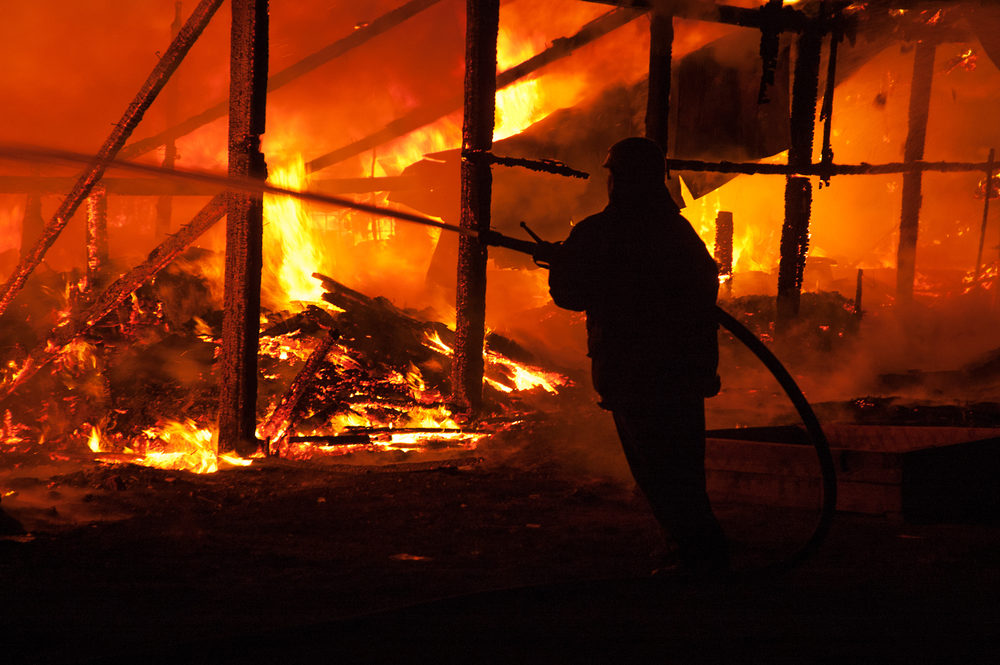
The National Fire Protection Association (NFPA) estimates that every 32 minutes, a person is injured in a fire. Every 142 minutes, a person dies due to a fire. In 2020, more than 2,139 fatalities were related to fires at home across the U.S. Of those fatalities, 34 occurred in New Jersey. 121 New Jersey firefighters lost their lives while on the job between 1990 and 2020.
Fire devastates everything it touches. Having working smoke and carbon monoxide detectors and a fire safety plan practiced by your family, may reduce the potential for serious injury or death. Also, understanding the causes of fires and how negligence can play a role will make you better prepared.
Causes of Fires
Cooking: Some of the most common causes of fire are activities we perform every day. Cooking is the leading cause of fires and injuries and the second leading cause of fire-related deaths. People get distracted while cooking, sometimes forgetting that there is something in the fryer, on the stovetop or in the oven. One way to reduce the likelihood of a fire due to cooking is to focus on cooking and not leave food unattended.
Heating equipment: Items like space heaters and wood stoves are the second-leading cause of fires in the home but the third leading cause of fire-related fatalities. In the case of space heater-related fires, often objects are left too close to the source of heat, sparking a fire.
While chimneys and fireplaces can cause fires, often, these fires are the result of creosote buildup and can be prevented through regular maintenance. Regular chimney sweeping and maintenance can help reduce the potential for a fire. If you own your home, consider scheduling a regular cleaning. If you rent, ensure the landlord or building manager performs these standard maintenance items.
Electricity: We may take for granted that appliances run on power and laptops and cell phones are charged using electricity. But electricity can have a devastating effect when it is the ignition source of a fire. Electricity is the third leading cause of fires.
Appliances have been known to start fires simply by poor design or incomplete safety processes or due to faulty wiring in the home. Appliances are designed to operate safely and should not start fires. However, there are instances when appliances could be defective and cause a fire through no fault of your own.
Cigarettes and other lighted tobacco products: These items are the leading cause of fatalities related to fires. Each year an average of 560 Americans die in a fire started by a discarded cigarette. Abandoned or left smoldering, cigarettes are responsible for trash, mattresses, bedding and furniture igniting and spreading to the rest of the home. Most cigarette-related fires begin in the den, family room, living room or bedrooms. In fires that begin with an unattended or abandoned cigarette, someone is responsible for this action.
Drought: With hotter temperatures and severe drought, the risk of wildfires has increased. In New Jersey, we have begun to see wildfires impact our state. This year we have seen more than 900 acres scorched. If wildfires are started intentionally or by accident, it’s important to hold those responsible for the devastation.
Fire Injuries
Fires can be devastating, both to people and their homes. Recovering from a fire can be costly, resulting in extensive damage to homes, time-loss injuries, and most tragically, the loss of life. Fire fatalities are mostly caused by smoke and toxic gas inhalation. Respiratory injuries and burns are a major cause of non-fatal fire injuries.
Burns occur at varying degrees of severity. First-degree burns involve the top layer of your skin. Most people have experienced this type of burn from a sunburn. Typically first-degree burns heal without treatment and are recoverable. Second, third and fourth-degree burns require medical treatment.
Second-degree burns occur when the first two layers of skin are exposed to fire. Skin is darker red, with blisters and a glossy appearance. There is pain and the potential loss of skin.
Third-degree burns are very serious. They permanently destroy skin and other tissue as the burning penetrates the entire depth of the skin. Often these burns damage the nerves that register pain.
The most severe and deepest types of burns are fourth-degree burns. They can be life-threatening. In addition to destroying skin, these burns can damage muscles, tendons and bones.
Legal Help for Fire Accident Victims
The aftermath of any kind of fire accident is tragic and can be very stressful. You shouldn’t have to recover from property damage, a serious injury, or the loss of life after a fire on your own. An attorney familiar with fire accident cases can assist with insurance claims and help restore your life to a sense of normalcy.
When fires begin because of negligence or regular maintenance not occurring, landlords, property managers or other responsible parties need to be held accountable for their inaction. You might have grounds for a lawsuit. Working with knowledgeable and experienced fire injury attorneys can help you seek justice and compensation if there is fire-related property damage, injuries, or loss of life.
If a defective product caused the fire, a knowledgeable attorney can also help you hold the manufacturer accountable. Be sure to involve a lawyer early in the process as it can be lengthy and complicated to determine the cause of a fire. New Jersey fire accident victims can contact D’Arcy Johnson Day toll-free at (866) 327-2952 or online for a free legal consultation.

From sexual abuse matters to personal injury and workers compensation, Jessica brings a wealth of experience to her practice at D’Arcy Johnson Day. Her fluency in both English and Spanish enables her to help so many members of the community, as she focuses on accident and personal injury cases, work injuries, medical malpractice, immigration, criminal law, and municipal court proceedings among other areas of practice.










Comments for this article are closed.